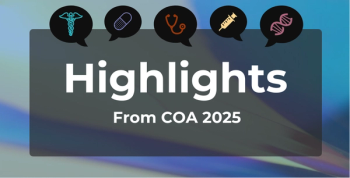
Dr Bruce Neal Discusses Canagliflozin's Potential for Heart Failure Prevention
The CANVAS study’s outcomes were “a positive first step” in proving that canagliflozin can be used for the primary prevention of heart failure in patients with diabetes, but more evidence is needed, according to the study’s lead author, Bruce Neal, MB, ChB, PhD, of the George Institute for Global Health at UNSW Sydney, who presented the findings at the 77th Scientific Sessions of the American Diabetes Association’s in San Diego, California.
The CANVAS study’s outcomes were “a positive first step” in proving that canagliflozin can be used for the primary prevention of heart failure in patients with diabetes, but more evidence is needed, according to the study’s lead author, Bruce Neal, MB, ChB, PhD, of the George Institute for Global Health at UNSW Sydney, who presented the findings at the 77th Scientific Sessions of the American Diabetes Association’s in San Diego, California.
Transcript (slightly modified)
How was the CANVAS program different from other SGLT2 inhibitor trials?
It’s hard to directly compare the CANVAS program with the other SGLT2 programs because we’ve got a slightly different patient subset. For example, two-thirds of our patients were patients with existing vascular disease, but one-third were primary prevention patients, so that’s a new patient subset that’s being investigated here, but that makes it difficult to directly compare it to the others.
I think the top line is that, if you look at the CANVAS program compared to the Jardiance program, for that primary cardiovascular outcome the findings are almost identical. Once you start to get down into looking at more specific outcomes with smaller numbers of events, it’s really much harder to make robust comparisons.
What do the CANVAS results indicate about primary prevention of heart failure with canagliflozin?
The program results are interesting, because we did have this one-third of participants who were primary prevention. Of course, we don’t have enough events to say this was independently significant in primary prevention because we didn’t power it to do that. What we can do is look to see, was there any evidence that it was different in the primary prevention to the secondary prevention, and we certainly don’t see any evidence of that. It’s a positive first step, but we really want some more data.
In terms of the heart failure piece, I think there’s a lot of interest in this class for the management of heart failure, because it clearly has a volume offloading effect, and that’s probably a big part of why we see these early benefits with the drug. I think patients who have got diabetes and are perceived to be at risk of heart failure are going to be really strong candidates for canagliflozin and other SGLT2 inhibitors.
Newsletter
Stay ahead of policy, cost, and value—subscribe to AJMC for expert insights at the intersection of clinical care and health economics.








